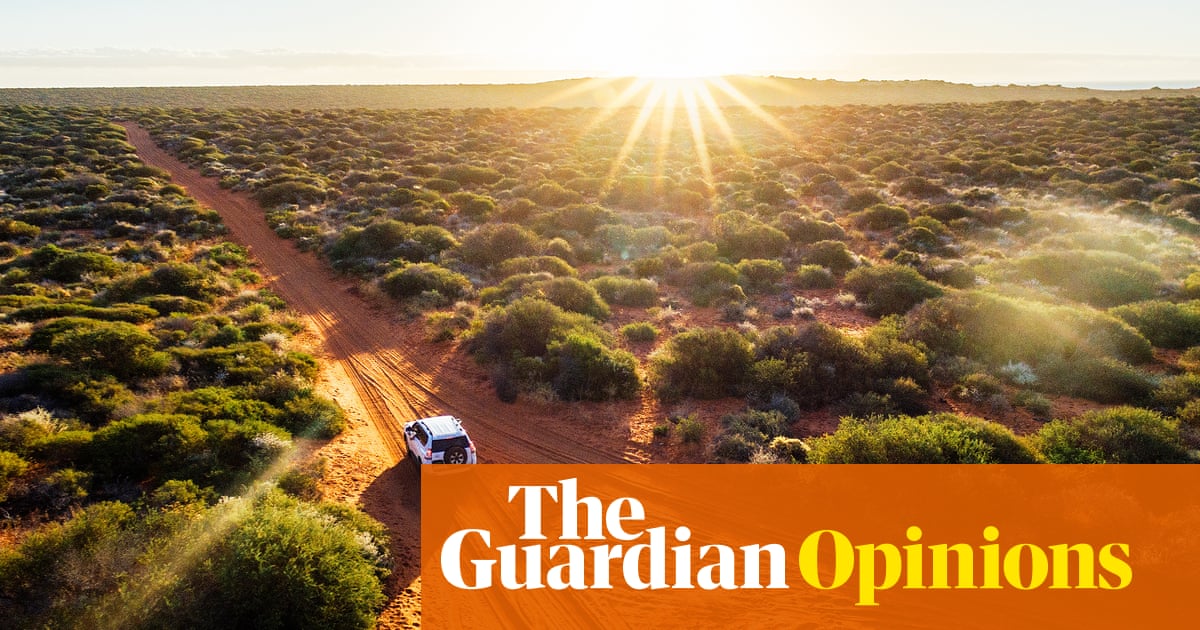Recently, I bundled the family into our beaten up station wagon and set out on a 3,000km journey from Sydney to the outback to instil some core memories into the kids. We had an ambitious agenda. The distances we had to cover to achieve my red dirt dreams were, to a sane minded person with two small kids in the back, loopy.
And I will admit that, for the majority of this road trip, we were gripped with a palpable, vibrating rage towards each other, about the distance yet to travel, and the discomfort of every moment we were in the car.
I’d had childhood memories of driving to the outback and I would show pictures of wide open spaces to my soft, city-raised kids with their distinct bubble tea orders and sushi train preferences. Time to send them down the (approved for tourists) mines.
And we did see everything. More roadkill than most nations have wildlife; a cocktail in a Tiki cup in Cobar; stars outside town that generated a real sense of awe; pepper trees, friendly donkeys, non-binary baristas. The outback had it all.
In a bird-hide outside Forbes we watched a swamp with bright green water with aesthetically pleasing dead eucalypts making perfect perches for the birds. Seeing a golden opportunity to impart some Aussie folklore, I confidently told the kids that a Bunyip lived there. I was unable to answer any of their follow up questions about it.
I had ideas of teaching the kids a thing or two about the real world, but their enthusiasm for the smallest joy knocked me for six.
At the side of a road motel that looked like a movie set for a particularly perverse murder, the kids thought being next to the train line and being woken at 3am by a thundering freight train was a feature, not a defect, and they cheered enthusiastically when the noise woke us again at 6am.
It took a full three days but we finally arrived in Broken Hill. It’s not every town that is dominated by a giant slag heap (non-derogatory) in the middle, and it’s a sight as remarkable as I remember as a kid, an astounding distance from Sydney and part of the South Australian time zone. It’s a town of 20,000 people surrounded by hundreds of kilometres of not much but minerals in every direction. It has such a distinctive look – an outback town frozen in time – that the whole place is heritage listed. It’s beautiful, it’s weird – we had to stop the car in the middle of the road to let emus cross – and should you forget its origins as a mining town, the streets have names such as Oxide and Sulphide.
I thought dragging the kids to a mineral museum would be one of the more torturous ways to grapple with what an oxide might be, but the kids squealed with joy thinking they were in real-life Minecraft.
One evening, we walked through the glowing orange hills at sunset – I’ve never taken so many pictures of rocks. There were hunks of dusty quartz and random rocks (I still need to ask chatGPT what a mineral is) sparkling as the light hit them, and the hills turned that Albert Namatjira purple at dusk.
We saw swollen swamps and the rivers of the far west; we sampled the finest Chinese meals that country Australia has to offer; had the humbling experience of being declined a table at the one restaurant in Lightning Ridge on a Tuesday night, and; had our breaths taken away by Aboriginal rock art preserved out the back of Bourke.
The trip wasn’t glamorous, nor did I recognise that my bedding set up at home has turned me into the Princess and the Pea, tormented by mattresses that I can’t sink into, or regulation sized towels. I understand that this is pathetic.
I tossed and turned, ready to mentally unravel about bedding, but the next morning, Easter Sunday, the kids woke up to an admittedly low energy Easter egg hunt in a $125/night side of the highway motel. They experienced what I can only describe as ecstasy, thrilled to ransack our small room looking for the eggs they must have spotted in the boot the day before. What I lacked in bunyip knowledge I was able to make up for with a detailed logistical plan the Easter Bunny had followed to execute this chocolate hunt.
I set out to teach the kids about the far reaches of our state, when in fact the kids were the best perspective I could ask for all along.
Emily Mulligan is a writer from Sydney
